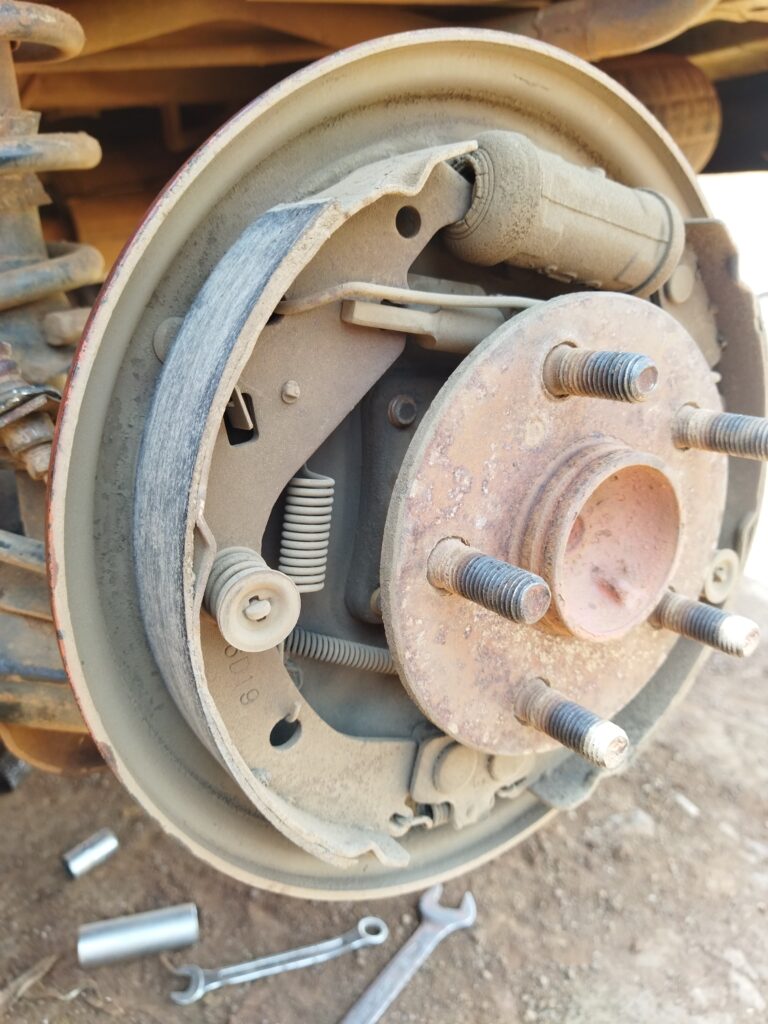
In Kenya, a land of diverse terrains and ever-changing driving conditions, choosing the right braking system for your vehicle is crucial. Understanding the most common types of brakes is also a plus. The disc brakes vs. drum brakes debate is here. The need to brake heavily and sometimes too often is a common phenomenon. This is because a significant number of roads are not marked, bumps are not standard in most cases, and some roads also have plenty of driving challenges.
The article will break down the pros and cons of disc brakes and drum brakes, helping you decide which option is better suited to the unique challenges of Kenyan roads.
Kenya’s automotive landscape includes a wide array of car makes and models, each tailored to suit the diverse needs of its people. Understanding the brake systems commonly used in these vehicles can help you make an informed decision when choosing between disc brakes and drum brakes.
Many Toyota models in Kenya, such as the Toyota Corolla, Prado, Hilux, Toyota Fielder, Probox, Rav4, use disc brakes in the front and drum brakes in the rear. This combination offers a good balance of performance and cost-effectiveness for daily driving.
Nissan vehicles, including the Caravan, Wingroad, AD, Nissan Note, Nissan Tiida, Nissan Juke, Nissan Serena and Nissan X-Trail, often come equipped with a similar setup to Toyota, using disc brakes in the front and drum brakes in the rear. This configuration is suitable for various driving conditions.
Ford vehicles like the Ford Ranger, Ford Raptor, and Everest may feature disc brakes in both the front and rear. This choice provides excellent braking performance, making it a preferred option for off-road and utility vehicles.
Honda models such as the Honda CR-V, Honda Fit, Vezel, Stepwagon, and Honda Stream may use disc brakes both in the front and rear, emphasizing responsive braking for urban and suburban driving.
Mitsubishi vehicles, like the Mitsubishi Outlander, L200, Mirage, Fuso, and Pajero often utilize a combination of disc brakes in the front and drum brakes in the rear, offering a practical solution for various driving scenarios.
Volkswagen models, including the Volkswagen Golf, Polo, Tiguan, Touareg, and Volkswagen Passat, typically feature disc brakes in both the front and rear, prioritizing performance and safety
Isuzu, known for its commercial vehicles, may incorporate drum brakes in the rear for heavy-duty applications, where durability and cost-efficiency are key. Isuzu D-Max, NQR, and Tougher all feature drum brakes for rear wheels.
Subaru vehicles, like the Subaru Forester, Outback, Legacy, and Impreza often use disc brakes on all four wheels, emphasizing all-wheel-drive performance and safety.
Keep in mind that brake configurations may vary within the same car make, depending on the specific model and trim level. When choosing a vehicle in Kenya, consider not only the make but also the model and its intended use.
Disc brakes are a type of braking system commonly found on high-performance vehicles. They offer exceptional stopping power and effective heat dissipation. Their responsiveness is well-suited for various weather conditions. However, their cost can be higher compared to drum brakes.
Disc brakes consist of several critical components, including the brake rotor (disc), brake caliper, brake pads, piston caliper, brake lines, and brake fluid. Additional elements such as abutment clips, anti-rattle clips, and a brake backing plate may be included.
Drum brakes are often found in older vehicles and are known for their cost-effectiveness. While they might not match disc brakes‘ performance, they do provide adequate stopping power for daily driving. Additionally, they have a reputation for durability, making them an attractive choice for budget-conscious consumers in Kenya.
Drum brakes comprise a distinct set of components, which includes the brake drum, brake shoes, wheel cylinder, brake springs, hold-down pins, adjuster mechanism, and backing plate. A parking brake lever and cable may be used for parking brakes.
Superior Stopping Power: Disc brakes excel in their ability to bring your vehicle to a halt swiftly. This feature is especially important when navigating challenging terrains like those found in Kenya.
Responsiveness: In our unpredictable weather conditions, disc brakes provide immediate braking performance, enhancing your vehicle’s safety and control, even during sudden stops.
Heat Dissipation: The design of disc brakes allows for efficient cooling, preventing overheating and brake fade. This is essential for extended use and hilly terrains.
Cost-Effective: Drum brakes are an economical option for drivers on a budget, as they are less expensive to manufacture and maintain.
Durability: With their enclosed design, drum brakes protect internal components from dirt, debris, and moisture. This design contributes to their longevity and reliability, even in challenging conditions.
Smooth Braking Experience: Drum brakes have a self-energizing mechanism, which results in smoother and more controlled braking, requiring less pedal effort.
Vehicle Type and Purpose: Consider your vehicle’s intended use. High-performance or off-road vehicles may benefit from disc brakes, while everyday driving might favor drum brakes.
Driving Conditions: Our challenging terrains, steep inclines, and unpredictable weather make disc brakes advantageous.
Budget: Evaluate your budget, as disc brakes are usually more expensive upfront.
Maintenance and Repairs: Consider long-term maintenance costs. Drum brakes are cost-effective for replacement parts and labor, while disc brakes may require less frequent maintenance.
Both disc brakes and drum brakes have their merits and are suitable for Kenyan roads. Disc brakes offer superior stopping power and responsiveness, making them a great choice for challenging terrains and varied weather conditions. On the other hand, drum brakes are cost-effective, durable, and well-suited for everyday driving.
When deciding which braking system is right for your vehicle in Kenya, evaluate your specific needs and budget. Regular maintenance and expert guidance are essential, so consult with a qualified automotive professional to ensure optimal braking performance and overall vehicle safety on our unique roads.
WhatsApp us